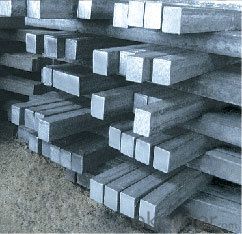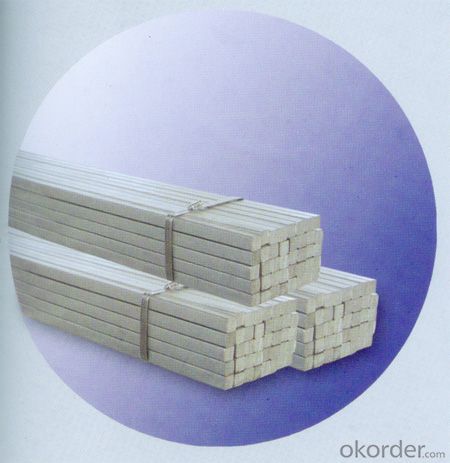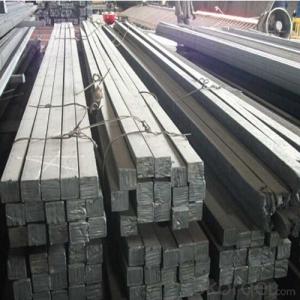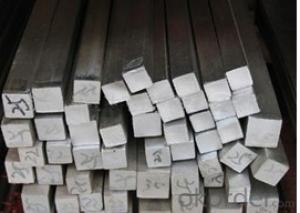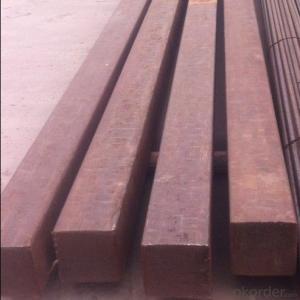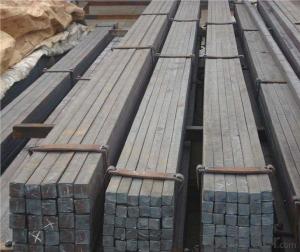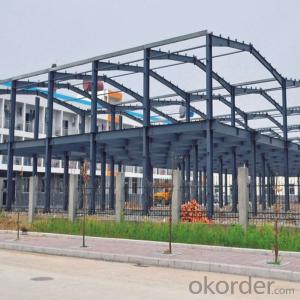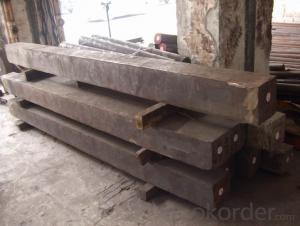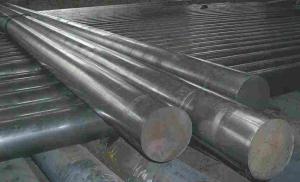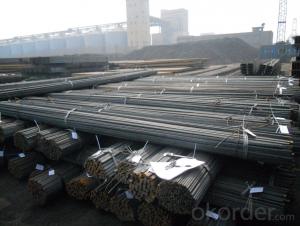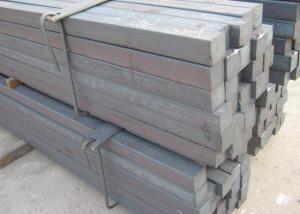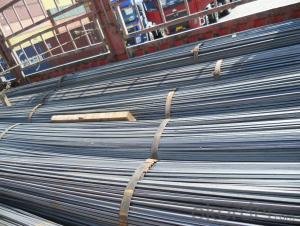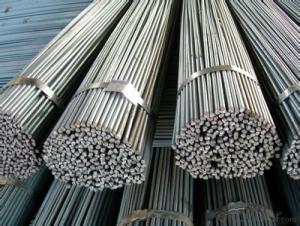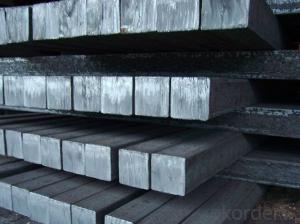13mm*1.33kg/m square bar for construction
- Loading Port:
- Tianjin
- Payment Terms:
- TT OR LC
- Min Order Qty:
- 25 m.t.
- Supply Capability:
- 100000 m.t./month
OKorder Service Pledge
OKorder Financial Service
You Might Also Like
Product Description:
Product Description
There are two types of Square Bar, one is hot rolled square bar and other one is cold drawn square bar. Our principal products is hot rolled square bar. We dedicate to products with material Q195 and Q235. We offer products with high quality and low price.
Specifications
-Standard: GB,
-Grade: Q195/Q235 or equivalent.
-Chemical Composition:
Standard | Grade | Element (%) | ||||
C | Mn | S | P | Si | ||
GB | Q195 | 0.06~0.12 | 0.25~0.50 | ≤0.050 | ≤0.045 | ≤0.30 |
GB | Q235B | 0.12~0.20 | 0.30~0.70 | ≤0.045 | ≤0.045 | ≤0.30 |
-Mechanical Properties:
Mechanical Properties | Grade | Steel diameter(mm) | |||
≤16 | 16~40 | 40~60 | 60~100 | ||
Yield Point Δs/MPa | Q195 | ≥195 | ≥185 | - | - |
Q235 | 235 | 225 | 215 | 205 | |
Tensile Strength | Q195 | 315~390 | |||
Q235 | 375~500 | ||||
Elongation δ5% | Q195 | ≥33 | ≥32 | - | - |
Q235 | 26 | 25 | 24 | 23 | |
Measures (Big measures):
(Section of Hot-rolled Square Steel Bar)
-Length of a side and Theoretical weight of Square Bar (Big measures).
Length of a side(mm) | Theoretical weight(kg/m) | Length of a side(mm) | Theoretical weight(kg/m) |
53 | 22.05 | 80 | 50.24 |
56 | 24.61 | 85 | 56.72 |
60 | 28.26 | 90 | 63.59 |
63 | 31.16 | 95 | 70.85 |
70 | 38.49 | 100 | 78.50 |
75 | 44.16 |
Notes:
1, The theoretical weights in the list, base on the density of 7.85 g/cm3.
2, Formula for theoretical weight of Square bar: a(length of a side) * a * 0.00785
3, The numbers with *mean that they are not regular or we don’t offer them.
-Regular length of Square Bar:
Steel | Length of a side (mm) | Length of steel (m) |
Normal steel | < 25 | 4~10 |
> 25 | 3~9 | |
Steel of high quality | All measure | 2~6 |
Tool steel >75 | 1~6 |
Usage/Applications
-The Square Steel is normally used as structure steel.
-Row material for other structure steel like steel angles, channels, I-beams, H-beams, etc…
-Row material for steel pipes.
Packaging & Delivery
-Packing Detail:
1, The products can be packed in bundles by steel wires.
2, The weight of each bundle no exceed normally 3 tons.
-Marks: We make tag marks and color marks for each bundle. The tag marks with white background and red company log will be tied up to each bundle. The information is usually including basic information of company and products like product name, specification, etc...and other information required by customers. As for color marks, we will paint both ends of each bundles to make sure that it will be more convenient for customers to distinguish theme from other products.
-Delivery Detail: 30~45 working days after receive buyer’s T.T. or L/C.
Payment:
-Invoicing on theoretical weight or actual weight as customer’s request.
-FOB, CFR or CIF.
-Regular terms of payment:
1, 30% payment in advance, the remaining balance (70% payment) against the copy of B/L.
2, 30% payment in advance, the remaining balance (70% L/C) against the copy of B/L.
3, Negotiable.
-The payment terms will be written in contraction detailed.
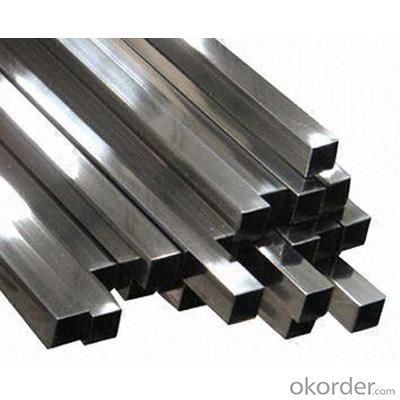
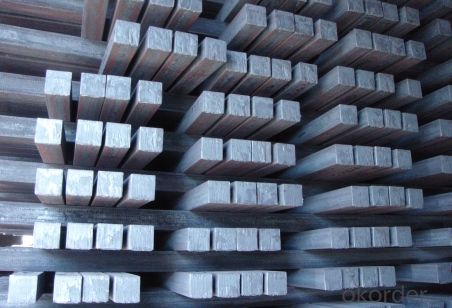
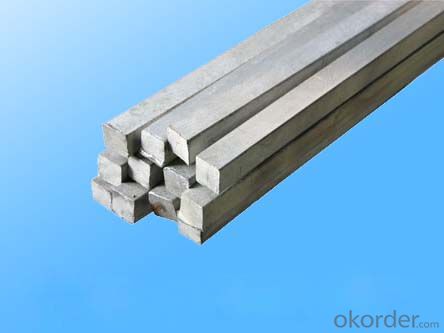
- Q: Can a steel square be used for checking the alignment of walls?
- Yes, a steel square can be used for checking the alignment of walls. A steel square, also known as a framing square, is a versatile tool that is commonly used in carpentry and other construction work. It consists of a flat, triangular-shaped piece of steel with various measurements and angles marked on its surface. To check the alignment of walls, a steel square can be placed against the wall's surface, ensuring that one edge of the square is flush against the wall. By visually inspecting the square against the wall, any discrepancies in the alignment can be easily identified. For example, if the square does not sit flush against the wall along its entire length, it indicates that the wall is not perfectly straight or aligned. Additionally, the angles marked on the steel square can be used to ensure that the corners of the walls are square. By placing the square in the corner and checking if the edges align with the walls, any deviations from a perfect 90-degree angle can be detected. Overall, while a steel square may not be the most precise tool for checking the alignment of walls, it can certainly provide a good indication of any irregularities. It is a simple and affordable tool that can be effectively used by both professionals and DIY enthusiasts to ensure the accuracy and quality of wall construction.
- Q: How do you use a steel square to find the height of a wall?
- To use a steel square to find the height of a wall, you need to follow a few simple steps. First, position yourself at a distance from the wall that allows you to have a clear view of the entire height. Make sure you have enough space to maneuver the steel square comfortably. Hold the steel square in your dominant hand, with the shorter leg (also known as the tongue) pointing upward and the longer leg (also known as the blade) resting against the wall. Ensure that the square is perfectly vertical and aligned with the edge of the wall. Next, look at the markings on the blade of the steel square. These markings are usually in inches or centimeters and will help you determine the height of the wall. Starting from the bottom of the wall, locate the point where the blade aligns with the top of the wall. Once you have identified this point, mark it on the wall using a pencil or chalk. To get an accurate measurement, you may need to move closer or further away from the wall and adjust your position until you can clearly align the steel square with the top of the wall. Finally, measure the distance from the bottom of the wall to the marked point on the steel square using a tape measure or ruler. This measurement will give you the height of the wall. Remember to double-check your measurement and ensure that the steel square remains vertical throughout the process. Accuracy is essential to obtain an exact height measurement. Using a steel square to find the height of a wall is a simple and effective method that can be used in various construction or DIY projects.
- Q: How do you use a steel square to measure board diagonals?
- To use a steel square to measure board diagonals, you will need to follow a few steps. First, place the steel square on one corner of the board, ensuring that one of the arms lines up with the edge of the board. Make sure the steel square is flat against the board surface. Next, extend the arm of the steel square across the width of the board until it reaches the opposite edge. Take note of the measurement where the arm intersects the edge of the board. Then, move the steel square to the adjacent corner of the board. Align one of the arms with the same edge as before and extend it across the width of the board until it reaches the opposite edge. Again, note the measurement where the arm intersects the edge. Finally, compare the two measurements you obtained. If they are equal, it means the board is perfectly square. If they differ, it indicates that the board is not square, and the difference between the two measurements represents the amount the board deviates from being square. Using a steel square to measure board diagonals is a simple and effective method to check for squareness, which is important in various woodworking and construction projects to ensure accurate and precise results.
- Q: Can a steel square be used for measuring stair angles?
- Stair angles can be measured using a steel square, which is also referred to as a framing square or carpenter's square. This versatile tool is commonly utilized by carpenters and woodworkers and comprises a long blade and a shorter tongue that creates a right angle. The blade is often engraved with various measurements and angles, enabling its suitability for a wide array of applications, including stair angle measurement. By positioning the steel square against the stair tread's edge and aligning it with the riser, one can effortlessly ascertain the stair's angle. The steel square's reliability, accuracy, and stability make it an excellent choice for measuring stair angles, guaranteeing precise and consistent outcomes during stair construction and installation.
- Q: Can a steel square be used for cutting wood?
- Indeed, wood can be cut using a steel square. Although its main function is to measure and mark right angles, it can also serve as a guide to facilitate straight cuts with a saw. By positioning the square parallel to the wood's edge, it establishes a reliable reference line for the saw blade to track, ensuring precise and meticulous cuts. Nevertheless, it is crucial to bear in mind that a steel square is not exclusively engineered for wood cutting purposes. Therefore, when utilizing it in this manner, exercising caution and employing appropriate safety precautions is imperative.
- Q: Can a steel square be used for measuring the height of a building?
- No, a steel square cannot be used for accurately measuring the height of a building. A steel square, also known as a framing square, is a right-angled measuring tool commonly used in carpentry and woodworking. It consists of two arms, one shorter and one longer, joined together at a 90-degree angle. While a steel square is useful for measuring and marking angles, it is not designed for measuring vertical distances. To measure the height of a building, specialized tools such as a laser level, a theodolite, or a total station would be more appropriate. These instruments are specifically designed for measuring vertical heights and can provide precise and accurate results. They use various techniques, such as lasers or optical measurements, to determine the height of a building by measuring the angle of elevation or by directly measuring the distance from the base to the top. In conclusion, while a steel square is a versatile tool for certain construction and woodworking tasks, it is not suitable for measuring the height of a building. Using the appropriate instruments designed for this purpose will ensure accurate measurements.
- Q: What are some common uses for a steel square in roofing?
- A steel square, also known as a framing square or carpenter's square, is a versatile tool commonly used in roofing projects. Some common uses for a steel square in roofing include: 1. Measuring and marking angles: Steel squares have markings that allow roofers to accurately measure and mark angles for various roof components, such as rafters, trusses, and hips. 2. Laying out roof rafters: A steel square helps roofers lay out and mark the angles and lengths of rafters, ensuring they are cut to the correct dimensions for a precise fit. 3. Determining roof pitch: Roof pitch refers to the steepness or slope of a roof. By using a steel square, roofers can easily determine the roof pitch, which is essential for proper installation and drainage. 4. Checking for squareness: Roofers use a steel square to check if the corners of a roof are square, ensuring the roof structure is properly aligned and balanced. 5. Cutting and shaping roof materials: Steel squares can be used to make accurate cuts on roof materials such as shingles, tiles, and metal sheets. Roofers can align the square along the material's edge to guide their cuts, resulting in precise and clean edges. 6. Creating roof layout patterns: Roofers often use steel squares to create layout patterns for complex roof designs or custom features. By using the square's angles and measurements, they can transfer the desired layout onto the roof surface. 7. Aligning roof trusses and joists: Steel squares are valuable for aligning roof trusses and joists during installation. Roofers can use the square to ensure these components are properly aligned and secure, maintaining the structural integrity of the roof. Overall, a steel square is an essential tool for roofers as it provides accuracy, precision, and versatility in various roofing tasks, making it an indispensable tool in the roofing industry.
- Q: What are the advantages of using a steel square over other measuring tools?
- There are several advantages of using a steel square over other measuring tools. Firstly, steel squares are known for their accuracy and precision. They are designed with a right angle and straight edges, which ensures that the measurements taken using a steel square are highly reliable. This is especially important in construction and carpentry work where precise measurements are crucial for the success of a project. Additionally, steel squares are extremely durable and long-lasting. Made from high-quality steel, they can withstand heavy use and are resistant to wear and tear. This makes them a cost-effective tool as they do not need to be replaced frequently. Another advantage of using a steel square is its versatility. It can be used for a variety of purposes such as marking and measuring angles, checking the straightness of edges, and laying out lines for cutting or marking. This versatility makes it a valuable tool for professionals in various fields such as woodworking, metalworking, and masonry. Furthermore, steel squares often come with additional features such as built-in scales and measurement markings. These markings make it easier to take accurate measurements without the need for additional tools. This saves time and increases efficiency, making the steel square a practical choice for professionals and DIY enthusiasts alike. Lastly, steel squares are relatively compact and easy to carry around. They can easily fit in a tool belt or toolbox, making them convenient to use on-site or in tight spaces. This portability factor adds to their overall practicality and usefulness. In summary, the advantages of using a steel square over other measuring tools include its accuracy, durability, versatility, additional features, and portability. These features make the steel square a reliable and indispensable tool for professionals in various industries.
- Q: What are some common uses for a steel square in cabinetry?
- A steel square, also referred to as a framing square or carpenter's square, holds great importance in cabinetry due to its versatility. It serves various purposes, some of which include: 1. Layout and marking tasks: In cabinetry, precise marking of straight lines, right angles, and exact measurements is crucial. A steel square aids in these tasks, ensuring accurate markings for different cuts and joints. 2. Checking for squareness: To guarantee proper alignment and fit in cabinetry, precise squareness is necessary. A steel square is employed to check the squareness of panels, corners, and joints, ensuring correct alignment of all components. 3. Marking and cutting angles: For many cabinetry projects, angled cuts are required, such as mitered corners or beveled edges. A steel square acts as a guide for marking and cutting precise angles, ensuring accurate achievement of desired angles. 4. Measurement and transferring measurements: Due to its straight edges and measurement scales, a steel square proves useful for measuring and transferring measurements in cabinetry. It enables precise measurements of lengths, widths, and depths, ensuring accuracy throughout the construction process. 5. Checking and marking for level and plumb: In order to ensure stability and proper functionality, cabinetry needs to be level and plumb. A steel square aids in checking and marking level and plumb lines, ensuring correct installation of cabinets. 6. Creating and checking right angles: Right angles play a fundamental role in cabinetry construction. A steel square facilitates the creation of right angles by aligning its edges with the workpiece, ensuring proper alignment and squareness of corners and joints. All in all, a steel square is an essential tool for any cabinetmaker or carpenter, offering accuracy in layout, measurement, and alignment. Its precision and versatility make it indispensable in the field of cabinetry.
- Q: What are some common uses of a steel square in metalworking tool fabrication?
- A steel square, also known as a framing square or a carpenter's square, is a versatile tool commonly used in metalworking tool fabrication. Some of the common uses of a steel square in metalworking tool fabrication include: 1. Layout tool: Steel squares are used to mark and layout lines on metal sheets or workpieces. They provide accurate and straight angles for precise measurements and markings. 2. Right angle reference: Steel squares are ideal for checking and ensuring right angles in metalworking projects. By aligning the square's edges with the workpiece, one can easily verify if the corners are perfectly square. 3. Cutting guide: Steel squares can act as a cutting guide when performing tasks like sawing, shearing, or scoring metal sheets. The square's straight edge can be used as a reference to guide the cutting tool and ensure straight and accurate cuts. 4. Measuring tool: Steel squares come with graduated scales along the edges, allowing for quick and accurate measurements of lengths and angles. These measurements are crucial for ensuring precise dimensions and fit in metalworking tool fabrication. 5. Welding aid: Steel squares can be used as a guide during welding processes. They help in positioning and aligning metal pieces to be welded, ensuring that they are perfectly aligned and at the desired angle. 6. Checking for flatness: Steel squares can be used to check the flatness of a metal surface. By placing the square on the surface and observing the gaps, one can identify any irregularities or unevenness that need to be addressed. Overall, the steel square is a versatile and essential tool in metalworking tool fabrication. Its ability to provide accurate measurements, verify right angles, and act as a cutting and welding guide makes it invaluable for ensuring precision and quality in metalworking projects.
Send your message to us
13mm*1.33kg/m square bar for construction
- Loading Port:
- Tianjin
- Payment Terms:
- TT OR LC
- Min Order Qty:
- 25 m.t.
- Supply Capability:
- 100000 m.t./month
OKorder Service Pledge
OKorder Financial Service
Similar products
Hot products
Hot Searches
Related keywords



